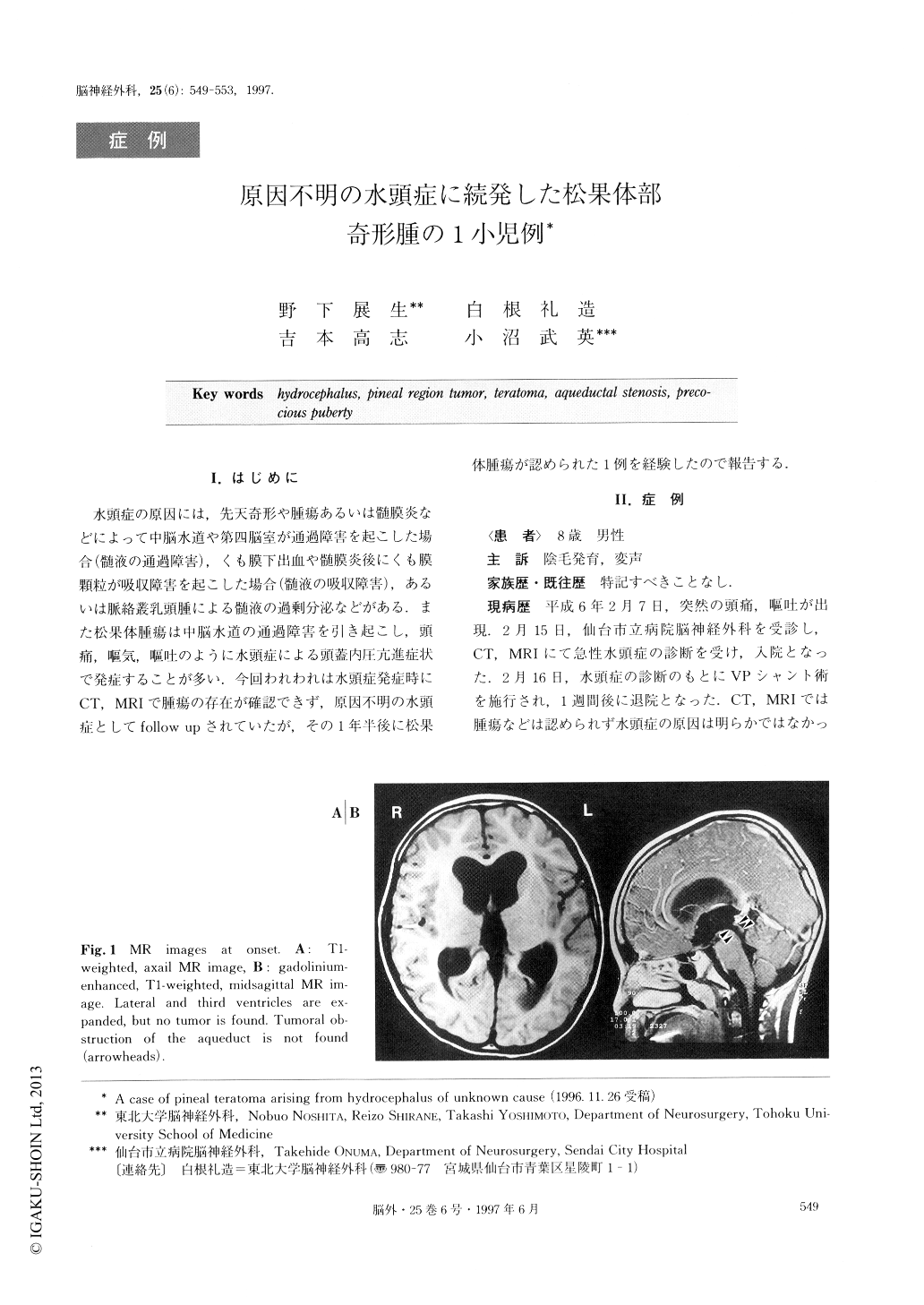Japanese
English
- 有料閲覧
- Abstract 文献概要
- 1ページ目 Look Inside
I.はじめに
水頭症の原因には,先天奇形や腫瘍あるいは髄膜炎などによって中脳水道や第四脳室が通過障害を起こした場合(髄液の通過障害),くも膜下出血や髄膜炎後にくも膜顆粒が吸収障害を起こした場合(髄液の吸収障害),あるいは脈絡叢乳頭腫による髄液の過剰分泌などがある.また松果体腫瘍は中脳水道の通過障害を引き起こし,頭痛,嘔気,嘔吐のように水頭症による頭蓋内圧亢進症状で発症することが多い.今回われわれは水頭症発症時にCT,MRIで腫瘍の存在が確認できず,原因不明の水頭症としてfollow upされていたが,その1年半後に松果体腫瘍が認められた1例を経験したので報告する.
We report a case of “functional aqueductal stenosis” which reveals dilatation of the lateral and 3rd ventricles without stenosis at the aqueduct in MRI. This case shows a pineal teratoma which presents one year later with symptoms of hydrocephalus caused by “functional aqueductal stenosis”.
A seven-year-old boy was admitted to our depart-ment owing to headache and vomiting. CT and MRI showed hydrocephalus. The lateral and 3rd ventricles were dilated while the 4th ventricle was normal. Furth-ermore, tumoral obstruction of the aqueduct was not found. After a ventriculoperitoneal shunt, he recovered well without neurologicall deficits.
One year later, symptoms of precocious puberty, thatis the appearance of pubic hair and deepening of his voice, were found. A follow-up MRI demonstrated a pineal region tumor. Although human chorionic gona-dotropin level in the serum and urine was transiently elevated, it normalized before surgery. The operation was performed by the occipital transtentorial approach and the tumor was totally removed. Histological ex-amination proved this tumor to be a mature teratoma, showing three germ cell layers. About two weeks later, he was discharged without any neurological deficit. In this case, although hydrocephalus occurred, MRI didn't demonstrate aqueductal obstruction caused by the tumor. However, one year later, a pineal region tumor was confirmed by MRI. This suggests that hydrocepha-lus might have some association with the appearance of the pineal region tumor. Therefore, it is necessary to be aware of the possibility of the occurrence of tumors whenever we encounter “functional aqueductal obstruc-tion”, when MRI doesn't demonstrate aqueductal ob-struction caused by a tumor.

Copyright © 1997, Igaku-Shoin Ltd. All rights reserved.


